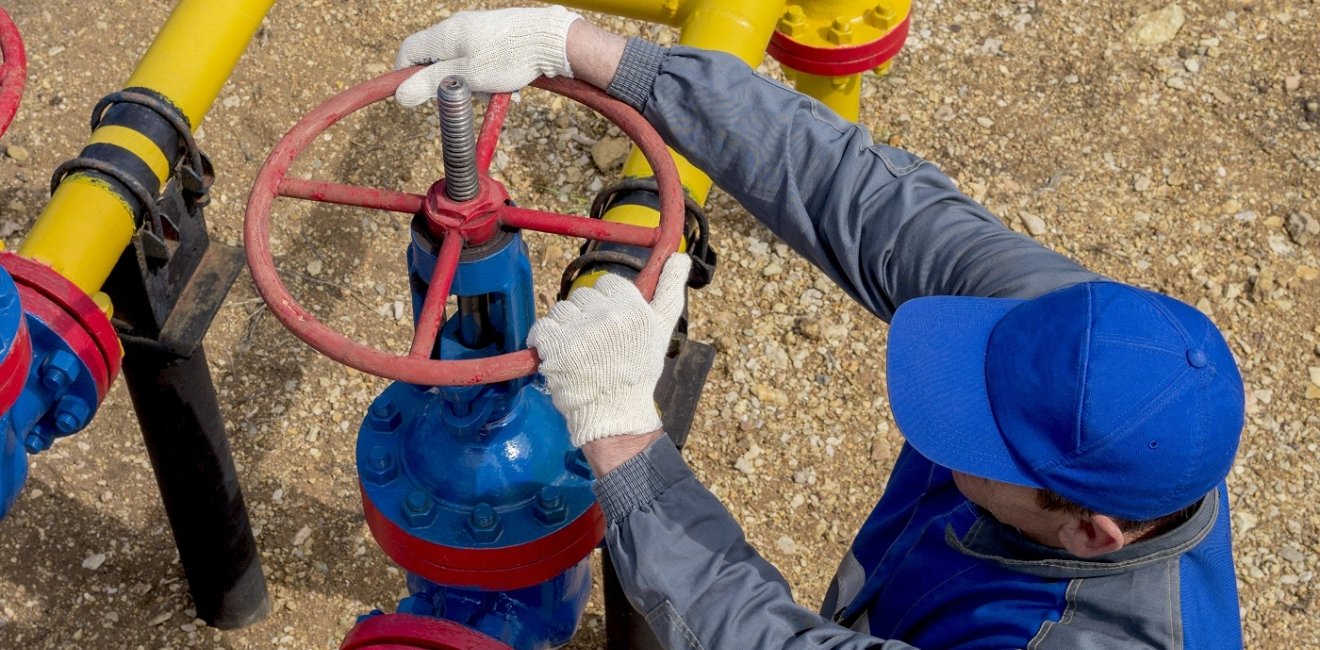
A blog of the Kennan Institute
BY ANDRIAN PROKIP
The approach of winter in Ukraine traditionally raises concerns as to the resilience of the energy system, whether supplies of natural gas will be adequate, and how payments for communal services should be handled. This year Russia’s attacks have created new challenges for the energy sector while deepening existing ones. The Ukrainian government faces the difficult task of coping with these challenges while fully absorbed in the defense of its sovereign territory.
Of all the energy sectors vital to Ukraine’s industry and everyday living—gas, electricity, transportation fuels, and so on—the gas sector is of particular importance for surviving the winter. A third of households in Ukraine rely on centralized heating and more than half have a centralized hot water supply, both mostly powered by natural gas. Some 80 percent of households rely on a centralized gas supply. Any interruption of the gas supply in winter would pose a threat to millions of households.
Principal Risks to the Gas Sector
The principal risks associated with the gas sector in the immediate future can be summed up as follows:
- the risk that key energy infrastructure will be damaged by missile attacks and shelling;
- the uncertain availability of natural gas to meet demands; and
- the lack of an established funding scheme to bridge the gap between the market price for gas and the much lower (regulated) price paid by households and heating utilities.
All these risks have been deeply influenced by the war.
The vulnerability of the energy infrastructure to air attacks is the gravest concern now. The energy sector cannot prepare to meet this threat on its own. There are effective air defense systems that can protect infrastructure from attacks, but they are in short supply in Ukraine, and Russian forces have managed to destroy important energy facilities.
As of early June, about 5,000 km of gas pipelines had been damaged, along with 3,800 gas distribution facilities. More than 200 gas-fired boiler houses and several cogeneration thermal power plants for centralized heat supply were damaged as well. If shelling continues into the start of the winter season, whole cities may find themselves without heat.
A related problem is the need to replenish Ukrainian stores of gas, which will depend on the availability of gas from Europe, where supplies of Russian gas have been severely curtailed. That has driven up prices in Europe, making imported gas more expensive for Ukraine. The potential for domestic gas production, which might bridge the gap in supplies, is currently unknown because of its vulnerability to hostilities.
Gas Consumption in Wartime Ukraine
By 2021, gas consumption in Ukraine amounted to 30–33 billion cubic meters (bcm) per year, of which 20 bcm were covered by domestic production and the rest was imported from Europe. This year, both production and consumption are affected by the hostilities. In mid-spring, gas production amounted to about 85 percent of the previous year’s production at the same time. How much production and consumption fall by the end of the year will depend on war developments, including the likely further loss of gas infrastructure, continuing emigration (which would spur a decline in gas use), and the ability of the industry to resume production, among other issues.
In an effort to counter anticipated threats to the gas supply, the government has ordered the state-owned Naftogaz to store at least 19 bcm of gas by the beginning of the heating season, which should be more than enough. In light of diminished volumes in storage and the uncertain potential for gas production, at least 6 bcm will have to be imported by October to meet estimated needs.
But Europe may face a gas war with Russia, which is already decreasing gas supplies. Fatih Birol, chief of the International Energy Agency, has warned that Russia may shut down gas exports to Europe completely.
Under market conditions, gas shortages in turn would be expected to drive up the price of gas significantly, potentially making the fuel unaffordable by many in an economy affected by war. In Europe, curtailed supplies of Russian gas drove a mid-June price increase of almost 50 percent, to $1,500 per thousand cubic meters, in just a week.
But regulations in Ukraine subsidize gas for households, keeping end-user household costs well below the market price of imported gas, and somebody has to pay the difference. The government has already submitted to parliament a draft law stipulating a budget sequester of UAH 264 billion (about $8–9 billion, depending on the exchange rate) to keep gas and heating tariffs fixed. Another part of the cost of imported gas must be covered directly by Naftogaz, and the rest with international financial aid.
Challenges for Naftogaz
These challenges are unprecedented, which does not mean they cannot be managed. But coping with them requires the responsible parties, Naftogaz and the government, to address them squarely and efficiently.
Naftogaz is a state-owned giant that supplies gas to almost all households and heating utilities. The corporation controls most of Ukraine’s gas production, and probably will play an outsized role in gas distribution this year. Its monopoly status is not the result of any effectiveness on its part but mostly because of government restrictions and overregulation. The question is, can the company cope with the challenges of the coming winter effectively?
Naftogaz must somehow import gas despite anticipated shortages in Europe. In testimony before the Helsinki Commission, Naftogaz’s CEO said that Ukraine would need to import 6 bcm of gas at a cost of $8 billion, suggesting that this could be a part of the U.S. Lend-Lease Act signed by President Biden in support of Ukraine. It is hard to imagine that 6 bcm of gas could be bought in Europe for $8 billion if the gas war happens. And the direct import of liquefied natural gas from the United States, a fuel with which Naftogaz has no experience, would require booking cargo ships and gas right now.
Naftogaz’s role in the gas market means it will be the key beneficiary of the government’s financial arrangements to cover the cost of winter heating fuel. Some analysts and politicians doubt that the government’s estimates were well grounded. They believe the amount of compensation Naftogaz stands to realize could be much lower once existing reserves of cheaply produced domestic goods and services, part of the energy supply value chain, are taken into account, and that the need for imported gas may be smaller than the government projects.
It appears that the government has decided to trust Naftogaz to get Ukrainians through the winter. The question is whether the company can cope with all the challenges that have emerged this year. In Ukraine's experience, huge state-owned companies fail to be effective. Naftogaz’s failure to boost gas production in recent years in a more favorable economic climate is just one of many strikes against the company and a reason not to be unduly hopeful that it can step up to the plate this winter.
The opinions expressed in this article are those solely of the author and do not reflect the views of the Kennan Institute.
Author

Director, Energy Program, Ukrainian Institute for the Future

Kennan Institute
After more than 50 years as a vital part of the Wilson Center legacy, the Kennan Institute has become an independent think tank. You can find the current website for the Kennan Institute at kennaninstitute.org. Please look for future announcements about partnership activities between the Wilson Center and the Kennan Institute at Wilson Center Press Room. The Kennan Institute is the premier US center for advanced research on Eurasia and the oldest and largest regional program at the Woodrow Wilson International Center for Scholars. The Kennan Institute is committed to improving American understanding of Russia, Ukraine, Central Asia, the South Caucasus, and the surrounding region through research and exchange. Read more

Explore More in Focus Ukraine
Browse Focus Ukraine
Talking to the Dead to Heal the Living

Ukrainian Issue in Polish Elections


